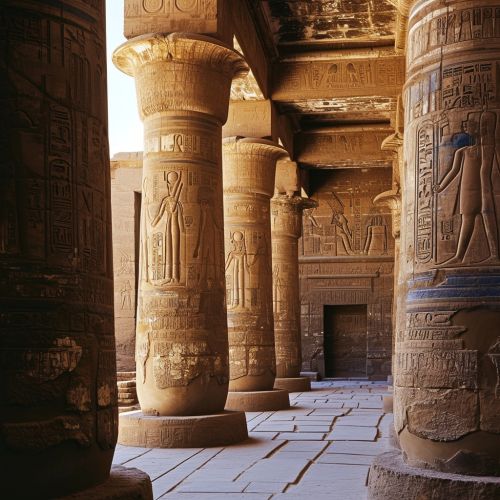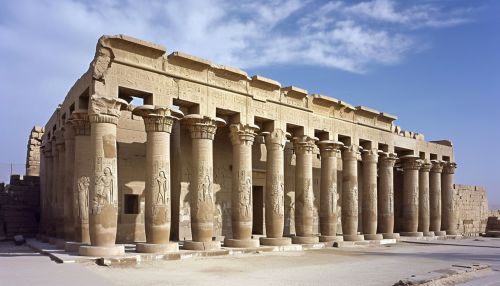Ancient Egyptian temples
Architecture
Ancient Egyptian temples were primarily made of stone because the buildings were meant to last forever. In the New Kingdom, they became more elaborate and were increasingly decorated with carved and painted scenes. The architecture of these temples has been studied extensively because they provide invaluable knowledge about ancient Egyptian society, religion, and culture.


Construction
The construction of the temples was a massive undertaking, requiring the labor of thousands of workers for many years. The stone used in the construction was quarried in the hills and deserts of Egypt, then transported to the site of the temple. The construction process involved the use of simple tools and machines, such as levers and ramps, to move and place the massive stone blocks.
Layout
The layout of an ancient Egyptian temple was highly symbolic and complex. The temples were designed to represent the primeval mound upon which the god Atum stood at the creation of the world. A typical temple would house a shrine, chapels, an inner sanctuary (where the god’s statue was kept), and several outer courts. The temple was surrounded by walls, and the entrance was a pylon gateway. Beyond the gateway was a peristyle courtyard, which led to a hypostyle hall. Beyond the hall was a second, smaller hypostyle hall, then a series of vestibules and antechambers leading to the sanctuary.
Function
The primary function of the temples was to serve as the dwelling place for the god to whom the temple was dedicated. The temples were not places of public worship or congregation, but were seen as the homes of the gods and goddesses of ancient Egypt. The priests who worked at the temples were considered the servants of the gods, and their duties included performing rituals, caring for the god’s statue, and managing the temple’s resources.
Notable Temples
There are several notable temples that have survived to the present day. These include the Karnak Temple, the Luxor Temple, and the Hatshepsut Temple at Deir el-Bahri. Each of these temples has unique architectural features and is significant in its own right.
